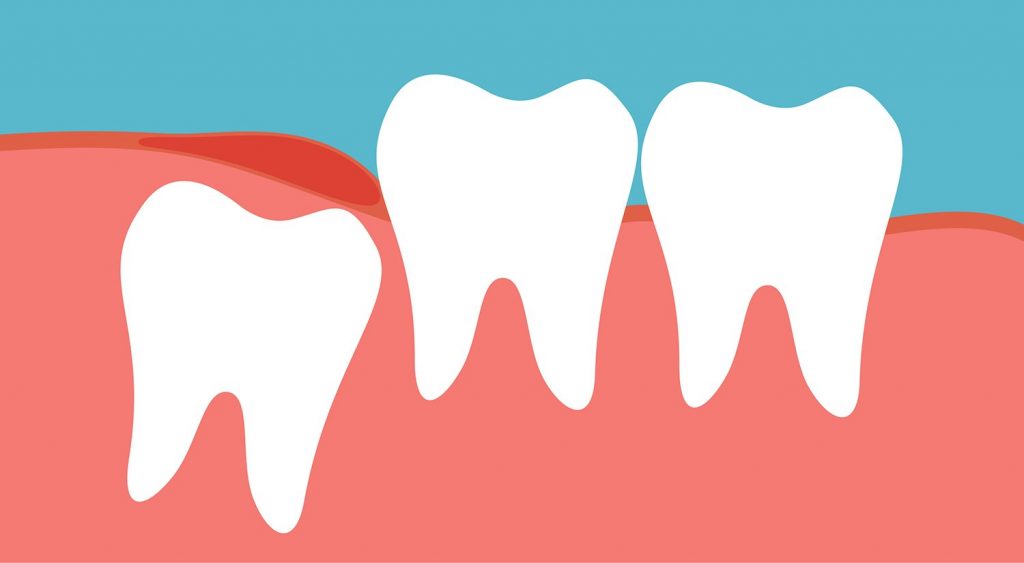It’s likely that you are one of the patients who has gotten this popular procedure. If so, the dentist more than likely extracted them because they were disrupting the condition of the rest of your teeth.
Our wisdom teeth are the last of our grown-up teeth to develop, and they are commonly removed during our teens and young adulthood. For some people, their wisdom teeth emerge without any complications or difficulties. For others, painful symptoms and dental problems go along with the appearance of these teeth.
A wisdom tooth may be partially or fully impacted. A partially impacted wisdom tooth means that only a small amount of the crown is exposed, and a fully impacted wisdom tooth means that it has failed to emerge through the patient’s gums. Wisdom teeth don’t always grow in straight, either. They have been known to grow in at angles, backward, and even upside down
Difficulties Caused by Wisdom Teeth
Third molars, also known as impacted wisdom teeth, emerge at the back of the mouth and fail to establish routinely because there is no room for them to develop. There are some cases where the third molars do not cause any pain or irritation; unfortunately, since these teeth are harder to clean, they tend to be more prone to gum disease and tooth decay compared to the rest of the teeth.
Oral surgeons will always remove impacted wisdom teeth that are creating difficulties for the patient, and they will also advise removing the wisdom teeth that aren’t currently causing pain under the precaution that there will be problems in the future.
So what sorts of soreness is related with impacted wisdom teeth? Here’s a rundown of some signs and symptoms you might experience:
- Painful gums that bleed or swell
- Swelling and pain at the jaw
- Trouble opening up the mouth
- Bad breath
When wisdom teeth grow in, they can cause further harm to the neighboring teeth. Orthodontic procedures might be needed if the incoming wisdom teeth push the other molars ahead, creating overcrowding. There is a risk of developing a tumor in the mouth– though it is infrequent– and this happens because the wisdom tooth can develop in a fluid-filled sac inside the jawbone, making a cyst.

If this takes place, the oral surgeon might just have to extract the neighboring bone and tissue. As we mentioned earlier, wisdom teeth are tough to maintain because they reside in the back of the mouth. Along with tooth decay, patients are potentially at risk of an inflammatory gum issue referred to as pericoronitis.
A Model Treatment
The majority of the time, the oral surgeon will get rid of all four wisdom teeth at the exact same time, but they might choose to do a few teeth at a time depending on their or the patient’s desires. The patient will undergo general anesthesia to minimize the amount of irritation they might feel during the treatment.
Depending on the amount of teeth the are being pulled, this procedure can last anywhere from one to several hours. Some of the most common negative side effects of wisdom teeth removal are swelling and bleeding at the surgery site. These can be managed at home with gauze and ice packs, but if these side effects persist, it is wise to seek out the performing surgeon for advice.



